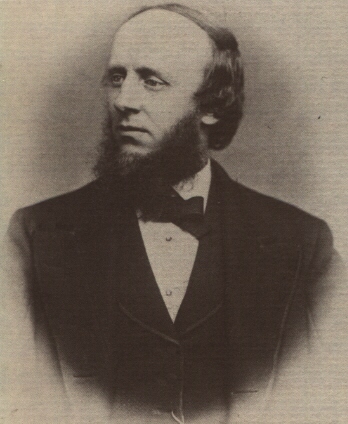 |
"[Angell's] influence led [the University of] Michigan to take the first steps toward an international student body." |
 |
"[Angell's] influence led [the University of] Michigan to take the first steps toward an international student body." |
| Something upon which the University has prided itself for years has been its cultural diversity. President Angell had served for a brief time as United States minister and envoy to China from 1880-81 (Bordin, 31). Shortly thereafter, a sizable influx of foreign students, especially from China occurred (Farrand, 185). Angell may have had a hand in this as he advertised the University among the Chinese (Peckham, 88). He was noted as being familiar with society and the world, and had a persuasive eloquence (Hinsdale, 62). More likely, the appeal of the University itself could have been enough to persuade foreigners to come. |
| The University may have already achieved international acclaim. And, perhaps the promise of a better life and education that they could receive in their own country was another motivating factor. At the turn of the century, the great coastal cities themselves were becoming 'melting pots,' and included people from a multitude of races and cultural backgrounds. The country's great educational institutions should be as diverse as the people who make up the world community. The University of Michigan's very structure was based on ideas from Eastern European schools. This very fact demonstrates that the sharing of ideas can benefit scholars from different cultures and lands. |
| Similarly, the make-up of the student body was also changed when in 1870 Michigan began to accept women for the first time (Hinsdale, 132). The first female student officially admitted to U of M was Miss Madelon L. Stockwell of Kalamazoo, who was accepted to the Literary Department (132). |
| Dr. Virginia Watts (right), who graduated in 1885, was the first African-American woman on campus as well as the first African-American woman to earn a medical degree from the University of Michigan (McGuigan, 36). |  |
| In the years immediately following the Civil War, many students who had enlisted in the army returned to finish their studies (Farrand, 173). The war had a great impact on the number of students enrolling. The number of students enrolled in the academic year 1866-67 totaled 1,255 (173). Men who came back from the war likely found that returning to civilian life was difficult without an education. Manual labor jobs were that were once the province of men had been taken by women while they were away. Professional positions, however, were almost always needed. The country was expanding into the western territories, and there was always a need for more doctors and other professionals in the newly settled lands as well as in the existing States |
| The Civil War also created opportunities at the University for African-Americans that were not possible before. In 1868, the first African-American students, John Davidson of Pontiac and Franklin Hargo of Adrian, began attending class at Michigan (Farrand, 173). The Emancipation Proclamation had officially made African-Americans citizens, and as citizens they had the right to enroll in State funded colleges like Michigan. But unfortunately, this was not practiced everywhere. The University was still very ahead of its time in accepting students of color. |
| The University went through these and other radical changes in the last half of the 19th century. It had gained administrative independence, endured the hardships of the Civil War, opened its doors to non-traditional students, and continued to prosper into the next century as one of the country's most progressive Universities. |
| [Previous Chapter] |